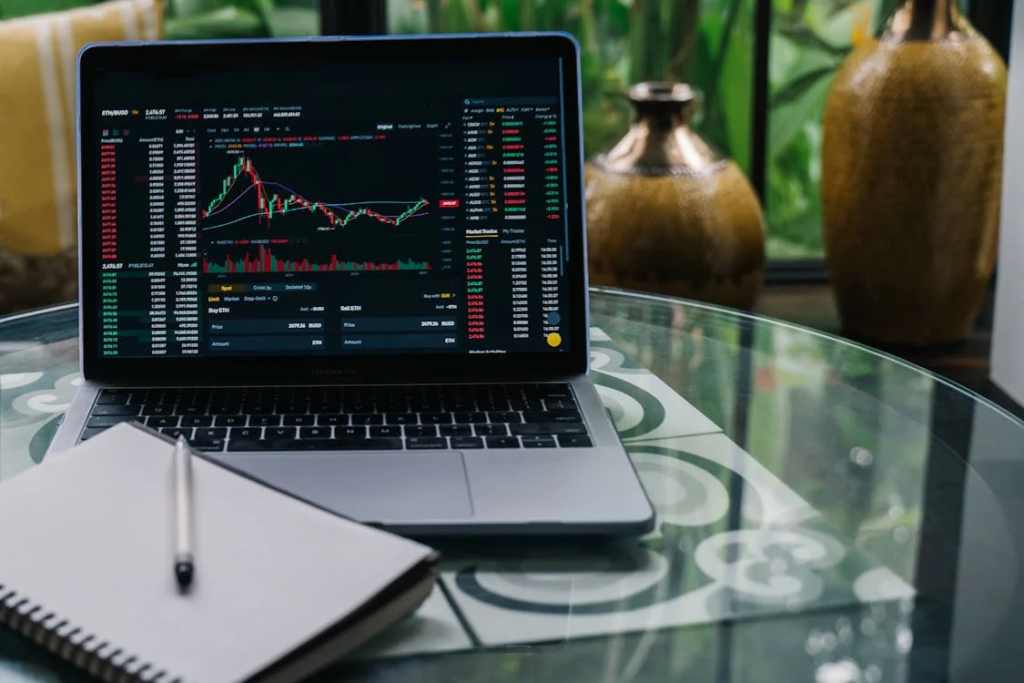
Cryptocurrencies have emerged as one of the most transformative financial phenomena of the 21st century, reshaping the global financial landscape with their decentralized nature and innovative technology. Since the launch of Bitcoin (BTC) in 2009, the crypto market has expanded dramatically, with thousands of altcoins and blockchain-based projects now in circulation. At its peak, the total cryptocurrency market capitalization surpassed $3 trillion, demonstrating both the immense potential and volatility of digital assets.
While some investors and industry experts champion cryptocurrencies as a revolutionary financial innovation, others warn that the market is a speculative bubble that could eventually burst. The core debate centers around whether digital currencies offer long-term value and sustainability or if they are simply driven by hype and speculation, similar to past financial bubbles like the Dot-com boom of the late 1990s and the housing market crash of 2008.
Given the growing influence of cryptocurrencies, understanding the risks, rewards, and broader implications of investing in digital assets is more important than ever. This discussion will explore both the opportunities and the potential risks associated with cryptocurrencies, helping investors make informed decisions in an unpredictable financial landscape.
1. Understanding Cryptocurrencies and Their Market Evolution

What Are Cryptocurrencies?
Cryptocurrencies are digital or virtual currencies that utilize cryptographic techniques for security and operate on decentralized networks powered by blockchain technology. Unlike traditional fiat currencies issued by central banks, cryptocurrencies are not controlled by any single authority, making them resistant to government interference or manipulation.
Each cryptocurrency serves different purposes:
Altcoins (Solana, Cardano, Polkadot): Compete with Ethereum by offering faster transaction speeds and lower fees.
Bitcoin (BTC): Primarily considered a store of value, often referred to as “digital gold.”
Ethereum (ETH): A blockchain that supports smart contracts and decentralized applications (DApps).
Stablecoins (USDT, USDC): Digital currencies pegged to fiat assets to minimize volatility.
Privacy Coins (Monero, Zcash): Designed to offer enhanced transaction anonymity.
The Role of Blockchain in Cryptocurrency Security and Decentralization
Blockchain is a decentralized, distributed ledger that records transactions across a network of computers. This technology ensures transparency, immutability, and security, reducing the risk of fraud and eliminating the need for intermediaries like banks. Key features of blockchain include:
- Decentralization: No single entity controls the network.
- Transparency: Public ledgers allow anyone to verify transactions.
- Security: Cryptographic techniques protect against tampering and hacking.
Key Milestones in the Cryptocurrency Market
- 2009: Bitcoin’s launch by the pseudonymous Satoshi Nakamoto.
- 2011-2013: Emergence of altcoins like Litecoin (LTC) and Ripple (XRP).
- 2017: Bitcoin surpasses $20,000 amid ICO (Initial Coin Offering) boom.
- 2020-2021: Institutional investment grows; Bitcoin reaches $69,000.
- 2022: Crypto market downturn, collapse of Terra/Luna and FTX.
- 2023-Present: Regulatory scrutiny increases; Bitcoin ETF approval sparks renewed interest.
2. The Case for Cryptocurrencies as an Investment Opportunity

Blockchain Investment Opportunities
Blockchain technology extends beyond cryptocurrencies, powering industries such as supply chain management, healthcare, and finance. Innovations like smart contracts and non-fungible tokens (NFTs) have unlocked new use cases.
Institutional Adoption: Banks and Corporations Entering Crypto
Major financial institutions like JPMorgan, BlackRock, and Visa are integrating blockchain solutions. Companies like Tesla and MicroStrategy have invested in Bitcoin, further legitimizing crypto as an asset class.
Bitcoin and Altcoins: Diversification Opportunities
Investors can diversify portfolios by holding different cryptocurrencies:
- Bitcoin (BTC): Store of value, often called “digital gold.”
- Ethereum (ETH): Smart contract and DeFi leader.
- Stablecoins (USDT, USDC): Minimize volatility, pegged to fiat.
- Altcoins (SOL, BNB, ADA): High-growth potential in various blockchain ecosystems.



The Rise of Decentralized Finance (DeFi)
DeFi platforms enable users to lend, borrow, and trade assets without intermediaries. Protocols like Uniswap, Aave, and MakerDAO are reshaping traditional finance, offering higher yields but also introducing risks.
3. The Risks and Challenges of Cryptocurrency Investments
Cryptocurrency Investment Risks
- Extreme volatility: Prices can swing 20-50% within days.
- Lack of regulation: Limited investor protection.
- Liquidity issues: Some cryptocurrencies are hard to sell.
Regulatory Uncertainty
Governments worldwide are grappling with how to regulate crypto:
- U.S.: SEC classifying some cryptocurrencies as securities.
- China: Complete crypto ban.
- Europe: MiCA (Markets in Crypto-Assets) framework for regulation.
Cybersecurity Threats
- Exchange hacks (Mt. Gox, FTX collapse).
- Phishing scams and wallet vulnerabilities.
- Rug pulls and Ponzi schemes.
Taxation and Legal Challenges
Different countries have varying tax policies on crypto:
- Capital gains taxes on crypto trades.
- Strict KYC/AML compliance measures.
- Unclear tax reporting requirements in some regions.
4. Bitcoin and Market Speculation: Is It Sustainable?
Why Bitcoin is Considered a Speculative Asset
Bitcoin’s price is driven more by demand than intrinsic value. Unlike stocks, it does not generate cash flow, making valuation difficult.
Market Cycles and Price Fluctuations
Historically, Bitcoin follows a boom-and-bust cycle influenced by:
- Halving events (every 4 years).
- Regulatory developments.
- Macroeconomic factors like inflation and interest rates.
Institutional vs. Retail Investors
- Institutional investors bring stability but can also manipulate markets.
- Retail investors often buy at peaks due to FOMO (fear of missing out).
Social Media and Hype’s Impact on Prices
Crypto markets are heavily influenced by:
- Elon Musk tweets and celebrity endorsements.
- Reddit and Twitter communities.
- Pump-and-dump schemes.
5. The Fear of a Financial Bubble in the Digital Currency Space
Comparing Crypto to Past Market Bubbles
- Tulip Mania (1637): Speculative asset with no intrinsic value.
- Dot-com bubble (2000): Overhyped technology with unsustainable valuations.
- 2008 Financial Crisis: Excessive risk-taking and leverage.
Factors That Contribute to a Financial Bubble
- Overleveraging and speculative trading.
- Hype-driven price surges.
- Unsustainable projects with weak fundamentals.
Signs of a Market Collapse vs. Long-Term Sustainability
- Bubble signs: Unchecked hype, excessive leverage, unsustainable gains.
- Sustainability signs: Institutional adoption, regulatory clarity, real-world use cases.
6. Cryptocurrency Market Volatility: A Double-Edged Sword
Causes of Extreme Price Swings
- Low liquidity in some markets.
- Whale movements (large investors manipulating price).
- Global macroeconomic events (inflation, interest rate hikes).
How Traders and Investors Capitalize on Volatility
Cryptocurrency markets are known for their extreme price fluctuations, with assets like Bitcoin, Ethereum, and altcoins experiencing double-digit percentage changes in a single day. While such volatility poses significant risks, savvy traders and investors have developed various strategies to capitalize on these price swings.
1. Day Trading: Profiting from Short-Term Swings
Day trading involves buying and selling cryptocurrencies within the same day to take advantage of intraday price movements. Given the high volatility in crypto markets, this strategy can be highly profitable but also risky.
- Key Tools for Day Trading:
- Technical Analysis (TA): Traders use chart patterns, candlestick formations, and indicators (e.g., RSI, MACD, Bollinger Bands) to predict price movements.
- Market Sentiment Analysis: Tracking social media trends, news updates, and whale movements to anticipate short-term market shifts.
- High Liquidity Pairs: Traders focus on highly liquid assets like BTC/USDT, ETH/USDT to ensure quick order execution.
- Risks:
- High transaction fees from frequent trading.
- Requires constant monitoring of price movements.
- Increased exposure to market manipulation (pump and dump schemes).
2. Swing Trading: Riding Medium-Term Trends
Swing trading focuses on capturing price momentum over several days or weeks rather than hours. Traders use technical indicators and fundamental analysis to identify entry and exit points within larger market trends.
- Common Swing Trading Strategies:
- Breakout Trading: Buying an asset when it breaks a key resistance level, anticipating further upward movement.
- Reversal Trading: Identifying overbought or oversold conditions (using RSI or MACD) and entering trades when a trend reverses.
- Moving Averages: Using 50-day and 200-day moving averages to confirm bullish or bearish trends.
- Advantages:
- Less time-intensive than day trading.
- Potentially higher gains by riding larger trends.
- Risks:
- Sudden market shifts due to unexpected news (regulations, hacks, FUD).
- Requires strong risk management to avoid liquidation.
3. Arbitrage Trading: Exploiting Price Differences Across Exchanges
Arbitrage trading involves buying a cryptocurrency on one exchange at a lower price and selling it on another at a higher price. Since crypto markets are decentralized, price discrepancies often occur between exchanges due to differences in liquidity, trading volume, and regional demand.
- Types of Arbitrage Trading:
- Spatial Arbitrage: Trading between different exchanges (e.g., buying Bitcoin on Coinbase and selling on Binance).
- Triangular Arbitrage: Taking advantage of price differences between three different cryptocurrencies within the same exchange.
- Challenges:
- High withdrawal fees and transfer delays between exchanges.
- Regulatory restrictions in certain countries limiting cross-exchange trading.
- Market efficiency reducing profit margins over time as more traders exploit arbitrage opportunities.
4. Derivatives Trading: Futures, Options, and Leverage
Advanced traders use crypto derivatives to profit from price volatility without actually holding the underlying asset.
- Futures Trading:
- Allows traders to bet on price movements (going long or short) using leverage.
- Popular platforms: Binance Futures, Bybit, CME Bitcoin Futures.
- Options Trading:
- Traders buy contracts that give them the right (but not the obligation) to buy or sell at a predetermined price.
- Call options: Profit when prices go up.
- Put options: Profit when prices go down.
- Leverage Trading:
- Using borrowed funds to amplify returns, with leverage ratios up to 100x.
- Higher potential for profits, but also high risk of liquidation if the trade moves against the trader.
- Risks:
- High leverage can wipe out entire accounts if the market moves unfavorably.
- Derivatives trading requires a deep understanding of risk management.
5. Holding (HODLing): Long-Term Investing in Crypto
While traders take advantage of short-term price movements, long-term investors (HODLers) believe in the fundamental value of cryptocurrencies and hold assets despite volatility.
- Why HODLing Works:
- Bitcoin and Ethereum have shown long-term appreciation despite short-term crashes.
- Institutional adoption is increasing, strengthening long-term market stability.
- DeFi, NFTs, and blockchain applications are expanding crypto use cases.
- Risks of HODLing:
- Prices can remain low for extended periods (bear markets can last years).
- Some altcoins may never recover from crashes.
- Security risks: Private key loss, exchange hacks, regulatory bans.
6. Market Making: Providing Liquidity for Profit
Market makers add liquidity to exchanges by placing buy and sell orders at different price levels, earning profits from the spread between these prices.
- Who Uses Market Making?
- Institutional traders and algorithmic trading firms.
- Automated trading bots executing thousands of trades per second.
- Risks:
- Requires significant capital to maintain liquidity.
- Sudden market crashes can lead to massive losses.
Strategies for Mitigating Risks
- Dollar-cost averaging (DCA): Investing small amounts over time.
- Using cold wallets for security.
- Diversifying portfolios with stable assets.
The Future of Crypto Market Stabilization
- Will ETFs and institutional adoption reduce volatility?
- Can central bank digital currencies (CBDCs) coexist with crypto?
- Will regulatory clarity bring mainstream acceptance?
7. Conclusion
The future of cryptocurrency remains uncertain. While some believe it will drive financial innovation and reshape economies, others fear it may be a speculative bubble destined to collapse. Balancing risk and opportunity is key for investors.
Final Thought: Cryptocurrency has the potential to be both an asset class and a speculative market—its long-term survival depends on adoption, regulation, and technological advancements.

